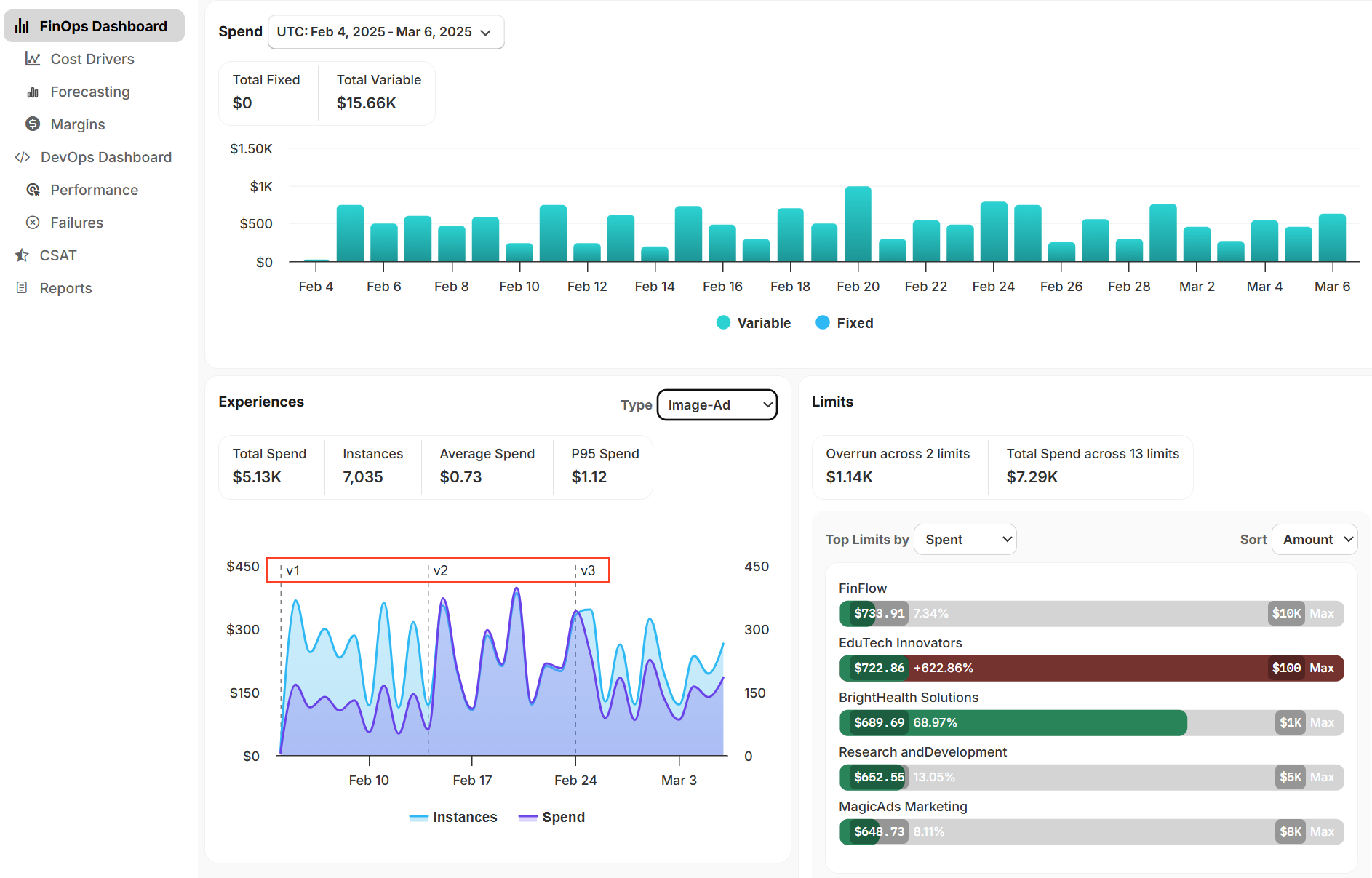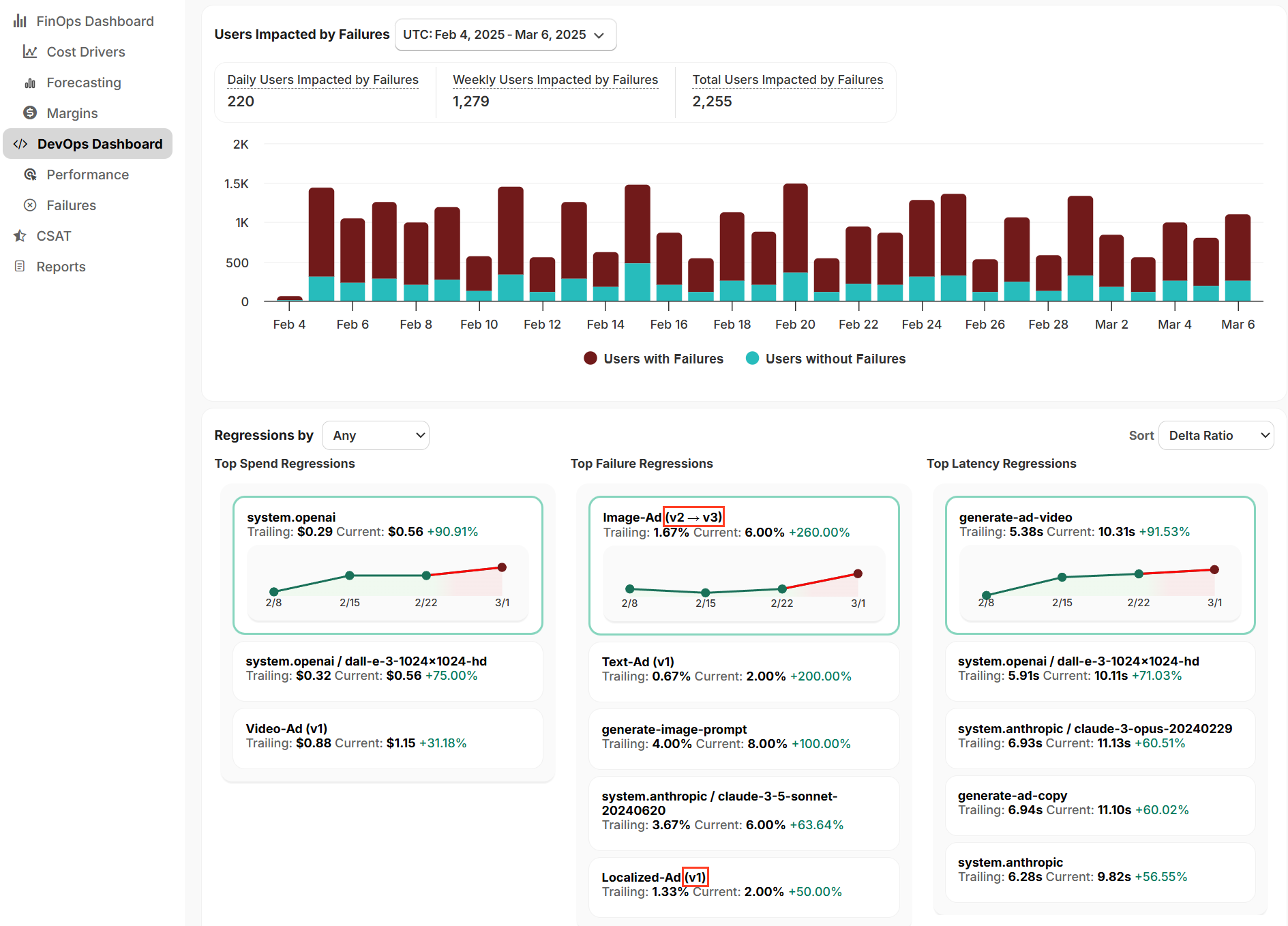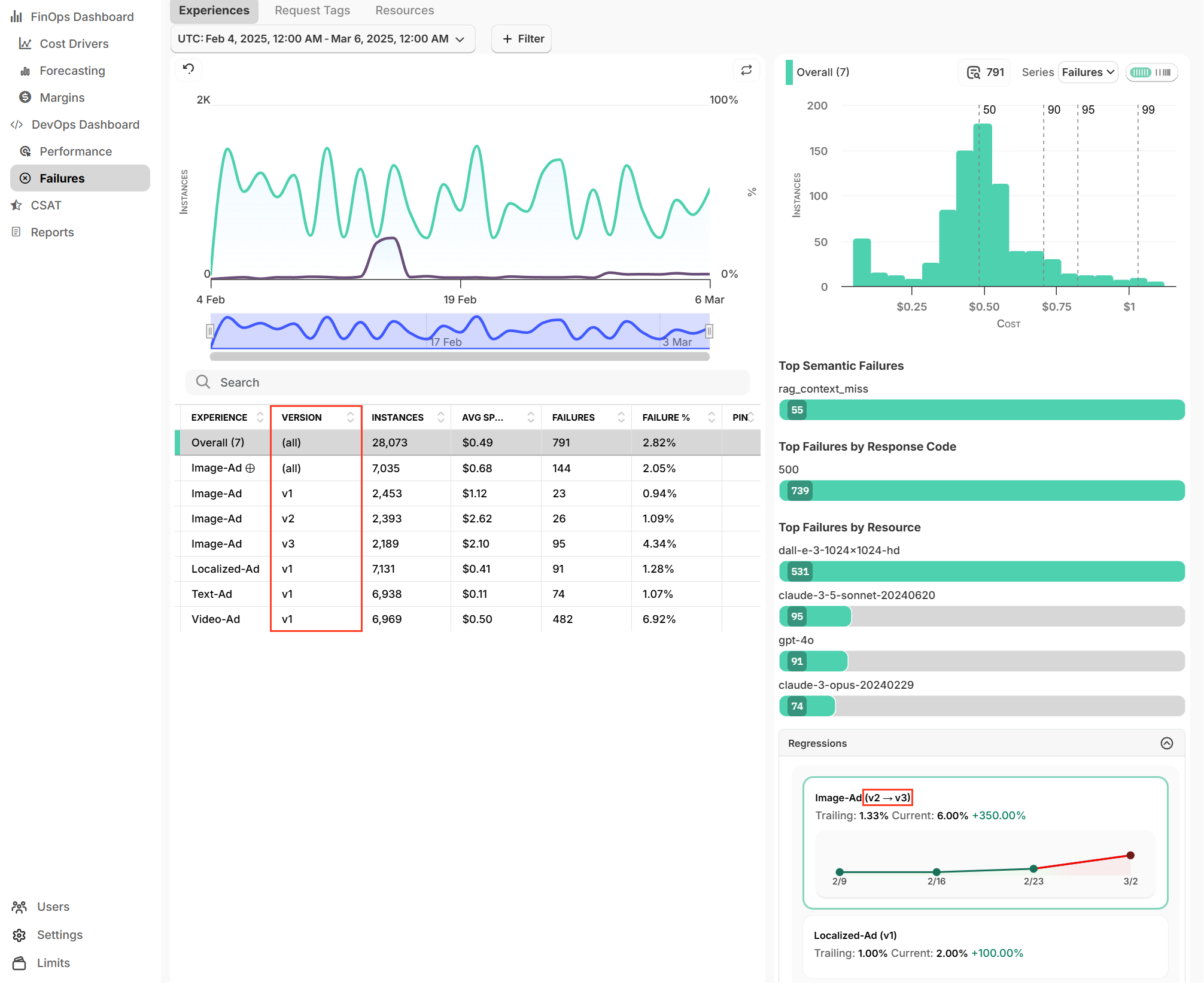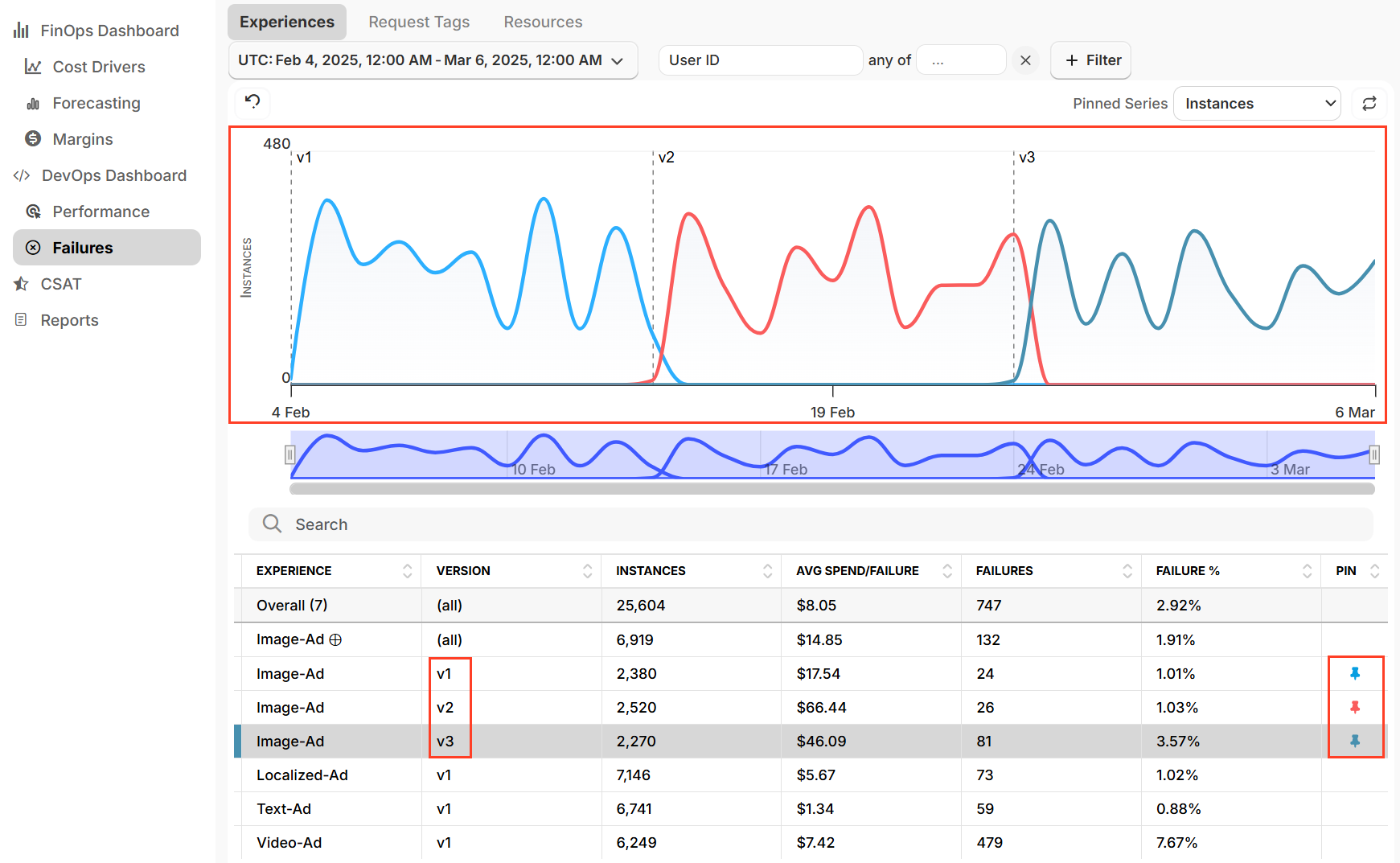Experience Versioning
Overview
Experience versioning allows you to effectively track and manage the evolution of your Experience implementations over time. Pay-i uses versioning to let you clearly distinguish between different versions of your Experience implementations, enabling data-driven decisions to optimize your product based on your specific business KPIs.
How Versioning Works
- When you create a new Experience Type using the Create Experience Type API, it automatically begins at
v1. - Versions increment sequentially (1, 2, 3, etc.) and are managed explicitly through the Increment Experience Type Version API. Note, the ability to increment versions from the Pay-i dashboard is coming soon.
- Version increment is not triggered when:
- The experience type description or name is updated via the Update Experience Type API.
- The default limits are updated via the Create Experience Type Limit Config API.
- Each new version inherits all properties from the previous version, including
Name,Description,LoggingEnabled, andLimitConfig. - Instances of experiences are tagged with the latest version number by default.
- In scenarios where multiple versions are simultaneously active, you can explicitly specify the desired experience version via
xProxy-UseCase-Versionheader, both while using the Request Ingest API as well as the proxy.
Identifying Versions
- Versions are identified by a numerical value prefixed with
v(e.g.,v3). - The experience type name remains the primary identifier (
xProxy-Experience-Name) during ingestion or proxying.
Viewing Versions in the Dashboard
Experience versions are displayed and managed across various sections of the Pay-i portal. Specifically, versions are displayed in:
- Time Series: Versions within the selected time window are indicated by dotted lines marking transitions.
- Table: Includes a dedicated "Version" column listing versions active during the selected period.
- Histogram: When you select an experience type, the histogram reflects data only from the selected version, clearly labeled (e.g., "Experience Name (
v3)"). - Regressions: Displayed with the highest version at the start of the selected time window and the highest version at the end of the window (e.g., "
v2 → v3"). Version changes do not affect regression calculations.
The experience version selector defaults to the highest version active during your selected time period. You can choose from any version active within your selected timeframe.

Experience versions in the FinOps Dashboard

Experience versions in the Cost Drivers Dashboard

Experience versions in the DevOps Dashboard

Experience versions in the Failures Dashboard

Failures of three experience versions contrasted side-by-side on the Failures Dashboard
Versioning Impact on Regressions and Forecasts
Pay-i does not use experience versions when calculating regressions and forecasts. It visually indicates version increments on the timeline as annotations to clearly represent the evolution of experiences over time.
Updated 2 days ago
